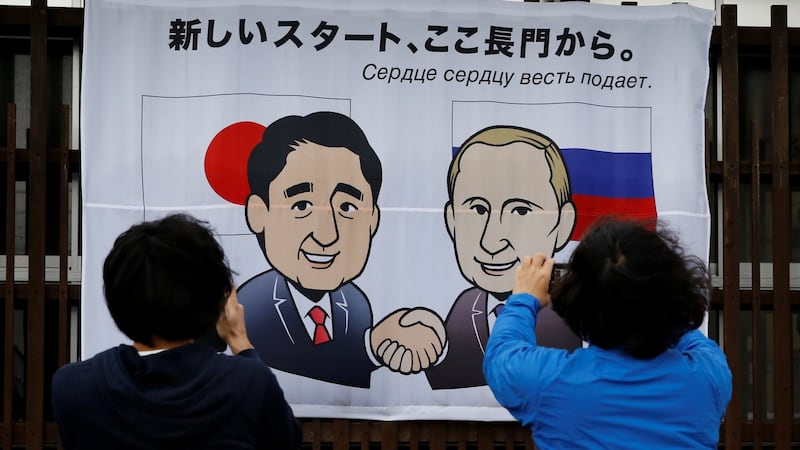From the tip of the wild Shiretoko Peninsula, on Japan’s northernmost island of Hokkaido, fisherman Hiroshi Tokuno has been taunted for years by the sight of his home.
Soviet troops expelled him along with 17,000 other Japanese from the island of Shikotan after the second World War. Most have died waiting to return. “I’m 82 now so it won’t be long for me either,” says Mr Tokuno.
Japan hopes that Russian president Vladimir Putin, who arrives in Tokyo on Thursday (December 15th) to meet Japanese prime minister Shinzo Abe, will end the seven-decade territorial dispute over Mr Tokuno's home and formally end hostilities.

“The absence of a peace treaty is an anachronism we inherited from the past and it must be removed,” said Mr Putin this week. “We want full-scale normalisation of relations.”
At the heart of the dispute are what Japan calls the Northern Territories, four islands at the bottom of the Kurile chain (Chishima in Japan), between Hokkaido and Russia.
Days before Japan’s surrender on August 15th, 1945, the Soviets abruptly abandoned their neutrality and declared war. They swept down the chain, scooping up Etorofu, Kunashiri, Shikotan and Habomai and setting off one of the world’s most intractable diplomatic stand-offs.
Japan demands the islands back; Russia insists they were legitimately seized. And there the issue has stood – until now.
1956 declaration
A declaration in which the Soviet Union agreed to surrender the smallest of the two islands, Habomai and Shikotan, was signed in 1956 but never realised. Japan, under pressure from cold-war ally America, declined to sign.
The dispute has hampered diplomatic and economic ties. Japanese diplomats fret that without a solution, Russia’s growing hostility to the West could push it closer to China.
Tokyo has reportedly ignored Washington’s objections to hosting the summit. America wants Japan and other allies to stick to a united front against Russian “aggression”.
Yet, the obstacles to détente are forbidding. Most Russians want to keep the Kuriles; more than two-thirds reject compromise based even on the 1956 declaration, which would allow it to keep all but 93 per cent of the disputed territory.
The islands stand between the Sea of Okhotsk and the Pacific ocean, a “life or death issue” for the Russian Pacific fleet in the event of a nuclear war, says Shigeru Ishiba, a former Japanese defence minister.
Mr Putin himself, while hinting at a solution based on the 1956 declaration where neither party “would feel like a loser”, stated bluntly in September: “We don’t trade in territories.”
Missile diplomacy
A bout of missile diplomacy has hammered home his point. The Russian fleet last month deployed anti-ship missiles on Etorofu and Kunashiri, a move widely interpreted in Japan as a slap in the face.
The fading prospects of a territorial deal may help explain Mr Abe’s surprise announcement on December 5th that he will visit Pearl Harbour, site of the Japanese 1941 attack that dragged the United States into the war.
The prime minister is looking for a bounce in popularity to distract from the likely failure of the Putin summit, say some Japanese newspapers.
The most likely outcome will be relaxed visa rules and a joint economic zone, allowing Japanese businesses easier access to the Kuriles – though Japan would have to swallow Russian sovereignty, a possible deal-breaker.
Mr Tokuno has grown used to disappointments. Fewer than 7,000 of the original islanders are still alive and Russians have now lived on the four islands almost as long as the Japanese once did. He’s not bitter, he says. The important thing is to make sure war never happens again.














